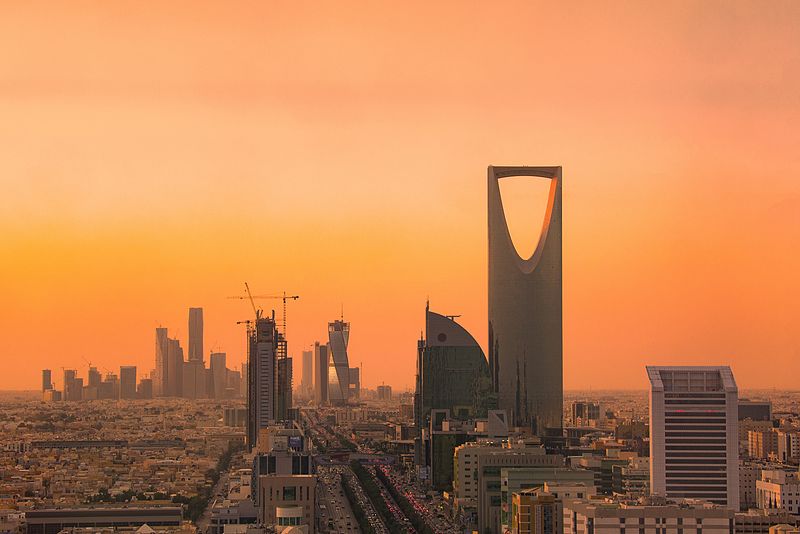One of Saudi Arabia’s three major cities, Riyadh (“The Garden”) wears many hats. What was once a mud brick fortress in the desert is now a thriving financial, administrative and political capital that’s home to more than eight million people and part of the historical Najd and Al-Yamama regions. As one of the wealthiest cities in the world, it is filled with curious contradictions. From far away, luxury cars line the highways and stunning towers rise above the desert landscape. When you take a closer look, you’ll find that it is abstemious and conservative, steeped in time-honored traditions. Riyadh is also not without controversy. In 2005 and 2011, the government held its first-ever elections. In 2015, women were granted the right to vote and stand as political candidates, and Deputy Crown Prince Muhammad Bin Salman announced that the country would lead an Islamic coalition made up to 34 nations to fight terrorism. Because of the ever-changing political landscape, it is a good idea to review the Department of State and U.S. Embassy & Consulates in Saudi Arabia websites for the latest news and information before traveling to the region in your private jet.
Touring Riyadh’s Cityscape
To appreciate the architecture in Riyadh fully, it’s helpful to know a bit about its history. With a total area of 694 square miles (about three times larger than Chicago), Riyadh is the third largest city in the Arab world. It rose as an urban center in 1824 when Turki bin ‘Abdallah bin Muhammad bin Sa’ud took control of the city and made it the capital of the second Saudi Arabian state. The city extended beyond its old walls in the 1930s with the construction of the al-Murabba’ Palace, an act that was instrumental in the city’s development and growth.
Despite the introduction of new technologies in the early 1900s, such as automobiles and electricity, the city retained many of its traditional architectural features, including courtyards, structures made with mud and clay bricks, and covered streets. It wasn’t until the 1950s that architects erected modern buildings in the capital city, beginning with the construction of the al-Nasriyah Farm, a small airport and a railway.
When king Sa’ud Bin ‘Abd al-‘Aziz took the throne in 1953, he transferred the kingdom’s government offices from Mecca to Riyadh, creating the need for a large-scale housing project. King Sa’ud also expanded al-Nasriyah into a group of villas, palatial residences, residential buildings and other facilities. The housing project and need for municipal buildings started a construction boom. The labyrinthine street patterns often seen throughout the Middle East were replaced by grid planning.
Some of the earlier architectural marvels built include the parasol-shaped Riyadh Water Tower, Equestrian Club, and the King Faisal Specialized Hospital. With time, the buildings constructed in the city became taller and more spectacular.
Modern architectural eye-candy that you’ll find in Riyadh include:
- Kingdom Centre: One of the city’s major landmarks with a unique sky bridge. The 41-storey tower has a multi-level mall, apartments, offices, Spazio 77 Restaurant and Lounge, and the Four Seasons Hotel.
- KAPSARC Mosque: A spiritual center with an axial alignment toward Kaaba and Mecca. The towering mosque is surrounded by a reflective pool that glows at night, making it seem as if the building levitates over the water. The adjacent 115-foot minaret tower mirrors the patterns found on the mosque’s façade.
- King Fahad National Library: One of the most important cultural buildings in the country, the library gained a new modern image that maintained the region’s classic architectural patterns. The façade is has rhomboid textile awnings that interpret Arabian tent structures, act as sunshades and reduce energy consumption.
- Muqarnas Tower: Completed in 2015, the architects who designed the Maqarnas Tower in the Financial District drew their inspiration from the architectural ornamented vaulting found throughout the Middle East. The tower’s unique floor plans allow each floor to have up to eleven corner offices, creating sought-after exclusive office environments. The various elements along the exterior walls reduce sun exposure and glare inside the building.
- Burj Al Anoud: With 20 floors and three basement levels, the Anoud Tower is a striking landmark that houses a hotel, commercial spaces, and office buildings. The mirror-like building is shaped like tapering bows that form an arch at the apex.

Photo by hamza82 via Flickr

